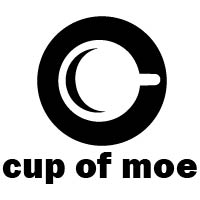We may earn money or products from the companies mentioned in this post.
2013 James Wan horror film “The Conjuring” didn’t necessarily take the supernatural horror genre in a different direction. Instead, Wan helped usher in a horror renaissance with a return to the psychological aspects. The Wan camp of horror emphasizes style and substance with exquisite attention to detail. “Annabelle: Creation” arrives as the fourth film in the “The Conjuring” series. With its gorgeous setting, superb acting, and pleasant scares and surprises, it’s the best in the series since “The Conjuring.”
Samuel Mullins (Anthony LaPaglia) is a dollmaker in a small town. The Mullins family consists of Samuel, his wife Esther (Miranda Otto), and daughter Annabelle “Bee” (Samara Lee). A tragic accident leaves Annabelle dead.
Flash forward 12 years, and the Mullins have opened their home to a group of girls led by nun Sister Charlotte (Stephanie Sigman) after their orphanage closes. Janice (Talitha Bateman) and best friend Linda (Lulu Wilson) rank among the youngest of the group. The older Nancy (Philippa Coulthard) and Carol (Grace Fulton), as well as Tierney (Lou Lou Safran), and Kate (Tayler Buck) also join. Samuel and Esther remain in their home as well, though Mrs. Mullins is now bedridden.
Initially, it’s a welcome change for the girls having a new house. It’s clear from their reactions that the Mullins house is a decided improvement over their previous housing. However, strange occurrences begin plaguing Sister Charlotte and the girls. While at first these happenings are dismissed as imagination, it’s soon clear that forces of evil are at play.
“Annabelle: Creation” has its share of genre tropes. It’s admittedly formulaic. “Creation” follows a similar structure to its predecessor, “Annabelle,” as well as “The Conjuring.” Moreover, the haunting sub genre dates back to films like “The Amityville Horror.”
Nevertheless, “Annabelle: Creation” presents a new twist on an old formula. Whereas “Annabelle” employs the trope of a family moving into a new home, “Creation” uses a cast of children. This change adds a different dynamic. Additionally, rather than concentrating on the entire group of orphans, Linda and Janice serve as the primary protagonists. “Creation” therefore fosters a strong connection between the girls and the audience.
What I enjoy the most about “Annabelle: Creation” is its characters and decidedly dark plot. Unlike its predecessor, “Creation” doesn’t feature the happy ending where the family emerges unscathed at the finale. Rather, it’s pretty grim, an element I didn’t predict but wholly enjoyed.
Under director David F. Sandberg, “Annabelle: Creation” oozes the attention to detail which defines the rest of the “Conjuring” flicks. Sets are immaculate, and it’s simply a pretty movie to watch despite the sinister setting. Music is aptly used, and “Creation” includes pleasant moments devoid of a score. Benjamin Wallfisch’s magnificent score paints an eerie though enjoyable musical portrait. Notably, Joseph Bishara who scored several Wan-iverse flicks doesn’t compose the score but does enjoy a cameo as an Annabelle demon.
Plus, “Annabelle: Creation” continues the cohesion of the Wan-iverse. This is where “Creation” surpasses its predecessor and solidifies its spot as the best film in the Wan-iverse since “The Conjuring.” Subtle references point to the Nun from “The Conjuring 2,” and the crescendo of a finale ties back into “Annabelle.” However, “Creation” maintains this connectivity while remaining standalone. For viewers who have seen “The Conjuring 2” and “Annabelle,” these are pleasing “aha” moments. But for those who haven’t, nothing is lost. I appreciate the organic means with which Sandberg unites the “Conjuring” universe which not only ties the stories together but also pays tribute to the franchise roots.
Unfortunately, “Annabelle: Creation” has its share of tropes. It’s largely predictable. Even at moments where it’s not clear how an event happens, it’s obvious that it will occur. Jump scares are pretty well choreographed. There’s an incredibly familiar ebb and flow. Newcomers move into a house, paranormal events transpire and escalate, culminating in an epic final sequence. Although most of “Creation” looks stunning, a few scenes opt for a bit too much CGI which appears fake. Though nothing nearly as cheesy as the Crooked Man from “The Conjuring 2.”
Still, acting is top notch. Notably, Bateman delivers a tour de force performance as Janice. Amidst the numerous tropes, there’s a delightful originality in the shockingly bleak ending. Ultimately, these flashes of surprise present a different dynamic and make “Annabelle: Creation” a must-see.
This post may contain affiliate links. We are a participant in affiliate programs such as the Amazon Services LLC Associates Program, an affiliate advertising program designed to provide a means for us to earn fees by linking to Amazon.com and affiliated sites. However, all products are thoroughly tested and reviews are honest and unbiased.

